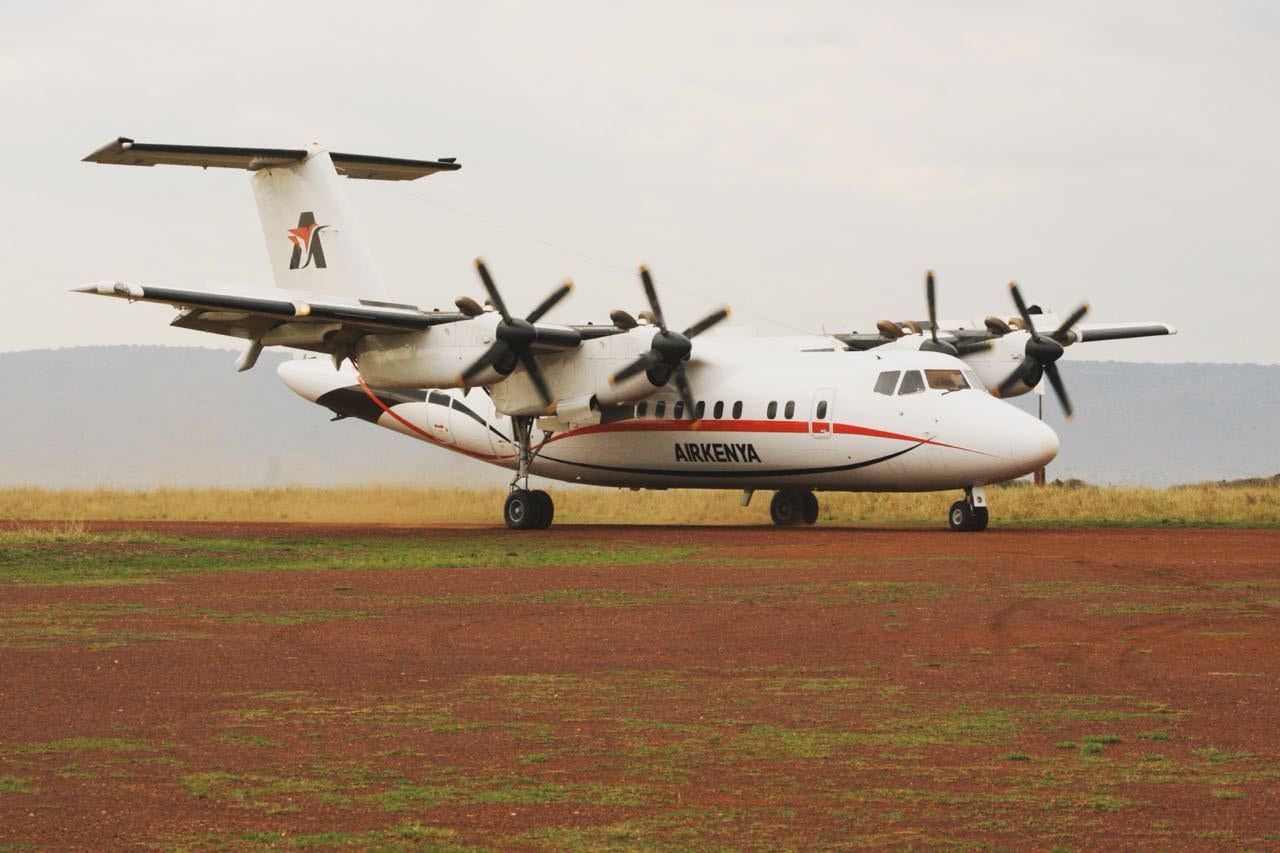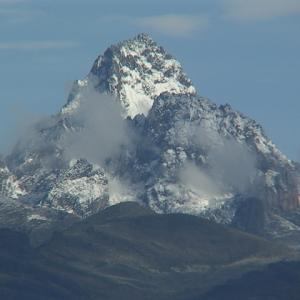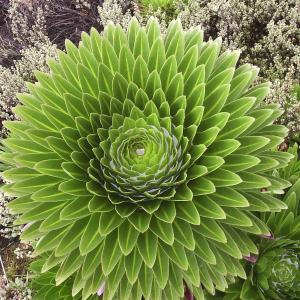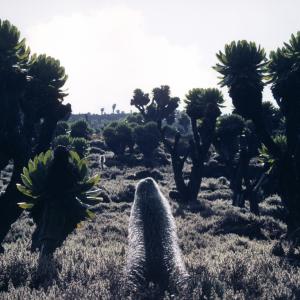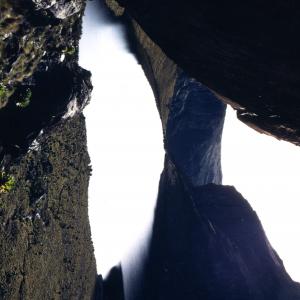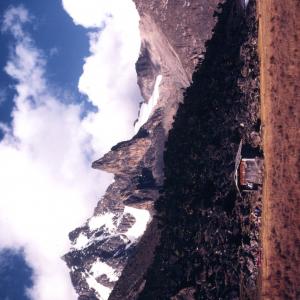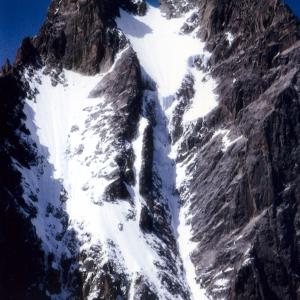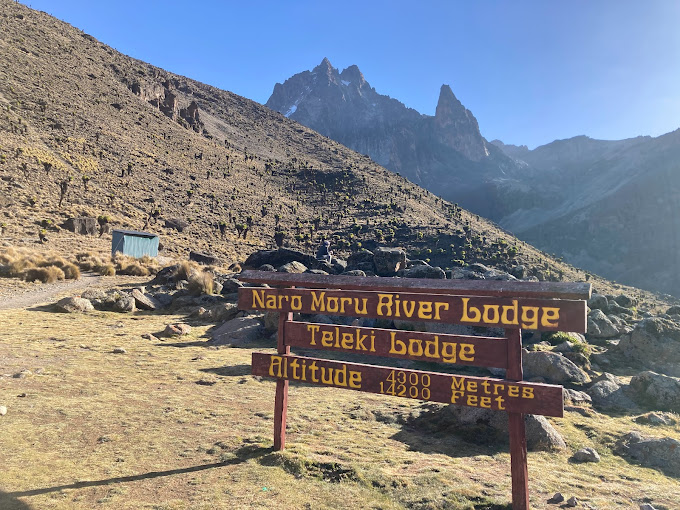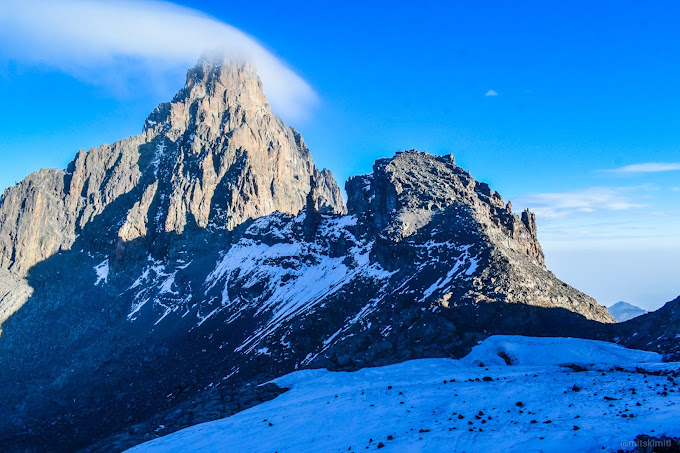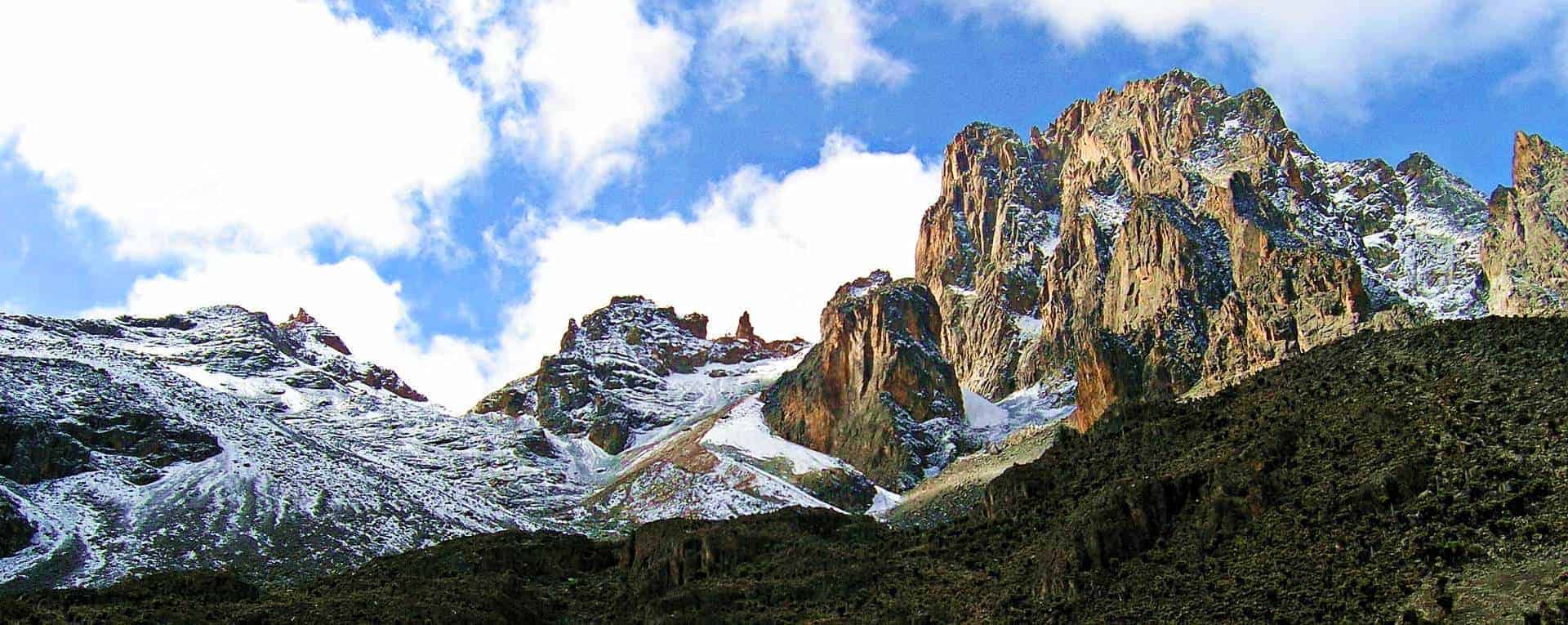
Mount Kenya National Park
Overview
Mount Kenya National Park is a breathtaking UNESCO World Heritage Site located in central Kenya, approximately 175 kilometers northeast of Nairobi. The park is centered around Mount Kenya, Africa's second-highest peak, which rises to a towering 5,199 meters (17,057 feet) above sea level. The mountain, a dormant stratovolcano, is not only a natural wonder but also a cultural symbol for the local communities who revere it.
The park covers around 715 square kilometers and was established to protect the mountain's unique ecosystems, diverse flora and fauna, and its striking landscapes. These landscapes include rugged terrain, deep valleys, dramatic glaciers, and snow-capped peaks, creating an ideal setting for a range of outdoor activities. Hiking, mountaineering, rock climbing, and wildlife watching are some of the most popular pursuits, attracting adventurers and nature enthusiasts from around the world.
Mount Kenya National Park is known for its rich biodiversity. The park's varied habitats, which range from montane forests to alpine moorlands and Afro-alpine deserts, support a wide array of wildlife. Visitors might encounter elephants, buffaloes, leopards, bushbucks, and the black-and-white colobus monkeys as they explore the park. Birdwatchers, too, are in for a treat, with numerous species to spot, including the rare and endangered Mount Kenya guereza.
Exploring Mount Kenya often involves trekking along its well-maintained trails. Among the most popular routes are the Sirimon and Naro Moru trails, which lead climbers through varying ecosystems as they ascend towards the summit. Along these trails, hikers will traverse lush montane forests, where unique plant species like giant lobelias and groundsels thrive, before reaching the starkly beautiful glacial landscapes near the peaks.
The cultural significance of Mount Kenya is profound, particularly for the indigenous communities that have lived in its shadow for centuries. The Kikuyu, Embu, and Meru people hold the mountain in spiritual regard, often referring to it as the sacred home of their gods. Visitors can gain insight into these communities' rich cultural heritage and traditional practices through guided cultural tours and experiences.
Beyond its natural and cultural allure, Mount Kenya National Park plays a vital environmental role as a water catchment area. The park is a crucial source for many of Kenya's major rivers, including the Tana and Ewaso Ng'iro, which are essential for the survival of both people and wildlife in the region.
In summary, Mount Kenya National Park offers an unparalleled experience, combining natural beauty, adventure, wildlife, and cultural richness. Whether you're scaling its peaks, wandering through its forests, or learning from its indigenous peoples, the park promises an unforgettable journey into one of Africa's most iconic landscapes.
Park access
Naro Moru Gate: Located on the west side of Mount Kenya, Naro Moru Gate is one of the main entry points to the park. It provides access to the popular Sirimon and Naro Moru routes to Point Lenana, which is the most accessible peak on Mount Kenya.
Sirimon Gate: This gate is situated on the northwest side of Mount Kenya and provides access to the Sirimon route, which is known for its scenic beauty and relatively gentle ascent.
Chogoria Gate: Situated on the eastern side of Mount Kenya, Chogoria Gate offers access to the Chogoria route, which is renowned for its stunning landscapes, including the beautiful Lake Ellis and Gorges Valley.
Meru Mount Kenya Bandas: This is an alternative access point located near the town of Nanyuki, offering accommodation and access to the park via the Chogoria route.
Park gates
Naro Moru Gate
Sirimon Gate
Chogoria Gate
Meru Mount Kenya Bandas:
Park attractions
The park is dominated by Mount Kenya, the second-highest mountain in Africa after Kilimanjaro. Mount Kenya offers several peaks to explore, including Batian, Nelion, and Point Lenana. Hiking and climbing enthusiasts can embark on various routes to reach these peaks, each offering unique challenges and breathtaking views.
Mount Kenya National Park features diverse landscapes, including dense forests, alpine meadows, moorlands, and glaciers. The park's picturesque scenery provides ample opportunities for photography, nature walks, and wildlife viewing.
Park wildlife
The park is home to a rich variety of wildlife, including elephants, buffalo, bushbuck, colobus monkeys, and various bird species. Visitors can embark on guided safari drives or nature walks to observe these animals in their natural habitat
Camping
The park has designated campsites where visitors can set up tents and spend the night. These campsites are equipped with basic facilities such as pit latrines, fire pits, and sometimes water sources. It's essential to camp only in designated areas to minimize environmental impact and ensure your safety.

